- Home
- Harlan Ellison
The Harlan Ellison Hornbook
The Harlan Ellison Hornbook Read online
The Harlan Ellison Hornbook
Harlan Ellison
ACKNOWLEDGMENTS
One tries to be punctilious. No writer does it unassisted. Every one of us says the same thing, book after book. And sometimes the thankyous run for pages. Often, it is the only recognition the excellent typesetter or editorial assistant gets for the uncounted hours of labor in aid of a single book getting through the labyrinth. But because twenty years have elapsed since these columns were written, memory fails and time carries away the names of those who were there, indispensably, at a special moment. I apologize to those who read this and know their efforts were important. They are no less important than these few who are noted.
And so, in the name of all good friends, those who were, and are gone…those who are, and remain…Thanks to Brian Kirby, Art Kunkin, Tim Kirk, John Heidenry, Leo and Diane Dillon, Jack Chalker, Otto Penzler, Bill Malloy, Robert Crais, Dr. Sidney Coleman, Stanislaw Fernandes, Sharon Buck, David Loftus, Gahan Wilson, Mariana Hernández, Lynn Lehrhaupt, Ed Bryant; and a slug on the bicep to Gil Lament; and a kiss on the puss to my much better half, my wife Susan.
THIS ONE IS FOR
EDDIE LONDON
MORE THAN JUST A FRIEND
FOR TWENTY-SEVEN YEARS
AND FOR
BILL DIGNIN
WHOSE CAMARADERIE STRETCHES
BACK THROUGH THIRTY-EIGHT YEARS
TO DAYS OF YOUTH IN CLEVELAND
TABLE OF CONTENTS:
AUTHOR’S NOTE
FOREWORD: THE CRICKET BENEATH THE HAMMER, BY ROBERT CRAIS
INTRODUCTION: THE LOST SECRETS OF EAST ATLANTIS
INSTALLMENT 1: EVERYTHING I KNOW ABOUT MY FATHER
2: VALERIE, PART ONE
3: VALERIE, PART TWO
4: VALERIE, PART THREE
5: GETTING STIFFED
6: THE TYRANNY OF THE WEAK, AND SOME FORESHADOWING
7: WITH BLOCH AND BORMANN IN BRAZIL
8: THE FIRST OF 3 CULINARY COMMENTS
9: NO OFFENSE INTENDED, BUT FUCK XMAS!
10: THE DAY I DIED
11–20: HARLAN ELLISON’S MOVIE, A COMPLETE SCREENPLAY
21: FAIR WEATHER FRIENDS, SUMMER SOLDIERS, AND SUNSHINE PATRIOTS
22: TROUBLING THOUGHTS ABOUT GODHOOD, PART ONE
23: BLESS THAT PESKY WABBIT
24: TROUBLING THOUGHTS ABOUT GODHOOD, PART TWO
25: WHERE SHADOW COLLIDES WITH REALITY A PREAMBLE
26: WHEN I WAS A HIRED GUN, PART ONE
27: WHEN I WAS A HIRED GUN, PART TWO
28: A RARE, KINDLY THOUGHT
29: 3 SMALL PLEASURES FOR A MORE ENDURABLE EXISTENCE [SECOND OF 3 CULINARY COMMENTS]
30: VARIETIES OF VENUE
31: WHY I FANTASIZE ABOUT USING AN AK-47 ON TEENAGERS
32: IN WHICH THE IMP OF DELIGHT TRIES TO MAKE THE WORLD SMILE
INSTALLMENT 33: I GO TO BED ANGRY EVERY NIGHT, AND WAKE UP ANGRIER THE NEXT MORNING
34: AHBHU
35: DEATH ROW, SAN QUENTIN, PART ONE
36: DEATH ROW, SAN QUENTIN, PART TWO
37: COLLEGE DAYS, PART ONE
38: THE DEATH-WISH OF A GOLDEN IDEA
39: COLLEGE DAYS, PART TWO
40: COLLEGE DAYS, PART THREE
41: THE LAST OF 3 CULINARY COMMENTS, GONZO-STYLE
42: OUT OF THE MAIL BAG
43: OH, DEAR, HE’S NOT GOING TO DO XMAS AGAIN, IS HE?
44: THE DEATH OF MY MOTHER, SERITA R. ELLISON
45: ENORMOUS DUMB
46: REVEALED AT LAST! WHAT KILLED THE DINOSAURS! AND YOU DON’T LOOK SO TERRIFIC YOURSELF.
APPENDIX A: COMIC OF THE ABSURD (1970)
B: DOGGING IT IN THE GREAT AMERICAN HEARTLAND (1974)
C: DARKNESS FALLS IN THE CITY OF THE ANGELS (1988)
D: LENNY BRUCE IS DEAD (1986)
E: DID YOUR MOTHER THROW YOURS OUT? (1988)
F: THE SONG THE SIXTIES SANG ( 1987/1988)
G: THE DINGBAT APPENDIX (1990)
NOTE: MANY OF THE NUMBERED INSTALLMENTS, AND SOME OF THE APPENDIXES, ARE PRECEDED BY INTERIM MEMOS, WRITTEN FOR THIS VOLUME, UPDATING OR PROVIDING BACKGROUND FOR THE SELECTION.
AUTHOR’S NOTE
What that is, the little mortarboard representation above, is something typesetters call a dingbat. These are ornamental slugs of type that are used by book designers, publishers, academics, and others involved with putting books together, as borders, decorations, separators, that sort of thing. They can also be used in place of what those who create type fonts call “bullets.” A bullet looks like this • usually, but sometimes it even looks like this • but if it’s much larger it’s probably a smear of ink from the printing press and has no esoteric meaning whatever. Dingbats can be in any shape. They are intended—when used as a surrogate for a bullet—as a kind of asterisk, to draw your attention to something usually explained or amplified in a footnote at the bottom of that page. Dingbats can look like anything; like these:
I once saw a dingbat in the shape of U Thant having an animated conversation with Mae West at the now-defunct Steuben Tavern in New York City. Well, you can just imagine.
Anyhow. The little mortarboard dingbat—selected to connote wisdom—appears here’n’there throughout this book. Why it appears is this: after the Author of this excellent volume had submitted the final manuscript, the Publisher and his Sanhedrin of dark-cloaked esthetes raised a number of queries about one or another minor matter. Such as, “In your review of the restaurant El Palenque in installment 8, you suggest starting dinner with a chi-chi cocktail. What the hell is a chi-chi cocktail?”
Well, how the devil should I know what a chi-chi cocktail is? In the first place, I don’t drink. In the second place, I wrote that damned column eighteen years ago. In the third place, it was on the menu and someone I was with ordered it and said it was excellent, which is as close to finding out what it was made of as I ever got. And in the fourth place, who gives a damn?
Now most of the queries the Sanhedrin raised were more pertinent than that, hut the bulk of them went to clarifying cultural tropes and contemporary references readers of today might not recognize. (Bearing in mind that for much of today’s reading audience, anything earlier than The New Kids on the Block or America’s Funniest Home Videos falls into the category of Ancient History, if it’s recalled at all.) So that meant, if I was to satisfy the Publisher and his Sanhedrin, that I would end up littering the bottoms of pages throughout this book like Fifth Avenue after a Ronald McDonald Testimonial Parade. Footnotes up the gi-gi. (Incidentally, the cocktail is pronounced the same way: cheee-cheee. Even as gi-gi is geee-geee. See what I mean about explaining all this stuff?)
So it seemed far more rational simply to use a dingbat to indicate a footnote sort of comment, and to put all the comments and explanations at the back of the book, following the last actual essay, but just before you hit the wonderful Index done by Gil Lamont. And so it came to pass that appears hither and yon as you wend your way from front to back. When you see it, you can either ignore the damned thing, or anal-retentively scurry to the penultimate section of the HORNBOOK for some basically wiseass remarks. The choice is yours.
You think this Author business is easy? As S. J. Perelman said, “The muse is a tough buck.”
ROBERT CRAIS
When this book was first published, Robert Crais was considered the fastest rising new star in the mystery field. The light from that star has only grown brighter in the ensuing seven years. His popular and critically acclaimed novels featuring private eye Elvis Cole now number seven in print (the latest, Indigo Slam, has just been released). Those kudos also follow his prestigious work in television. He has written and/or produced such series as Hill Street Blues, Cagney
& Lacy, and Miami Vice. Crais has been nominated for such awards as the Emmy from the Academy of Television Arts and Sciences, the Edgar from the Mystery Writers of America, the Anthony from the membership of the World Mystery Convention, and the Shamus from the Private Eye Writers of America. He has won the Macavity from the Mystery Readers of America. Currently, Crais is developing prime time series pilots for NBC, CBS, and ABC, as well as working on a new Elvis Cole. His four-hour miniseries, Cross of Fire—an examination of the rise to power of the Ku Klux Klan in 1920s America—aired, to killer ratings, on NBC in the Fall of 1989. He still lives in Los Angeles.
FOREWORD:
THE CRICKET BENEATH THE HAMMER
BY ROBERT CRAIS
Here is one of the ways in which I met Harlan Ellison:
I was down to Eddie Dipente’s dojo just below Crenshaw, here in Los Angeles, trying to work off the cloudy mind and soft body I get from too much writing. It’s always the same that way. I’ll get wrapped up in a project, spend twelve, fifteen hours a day on my butt, eating poison and wrecking my body until finally I can’t stand it anymore, just about go nerve-snapping crazy with it, and I run down and let Uncle Eddie straighten me out.
You’ve got to know Eddie. Six-one, one ninety-five, something like that, a rich mocha color with a sprinkling of gray in whatever tight-packed hair he has left. For twenty-two years he taught hand-to-hand down at Pendleton until he bailed out of the Corps and set up shop here in “Laz Anglas,” teaching actors and cops and imitation tough guys some of the nifty things he knows how to do with and to the human body. For the record, he also plays a fine jazz piano, can’t sing worth a stick, and is one of the warmest, most caring human beings I’ve ever met. Go figure.
Anyway, I was down at Eddie’s dojo, off in a corner by myself, struggling through a couple of katas that Eddie had set up for me, just stuff of his own, not the formal stuff, a little tae kwon do, a little kung fu, when he came up with the big blind-you-it’s-so-white smile and said, “Got a little treat for you. Got a friend coming in you gonna like. Another writer.” Eddie takes much joy in knowing writers, and can quote at embarrassing length from Kipling and Twain and Raymond Chandler and I think he must know every haiku ever written by Matsuo Bashō. Eddie said, “I’ve been trying to get this guy back to the mats for years, and he’s gonna give it a shot again, so you guys can work out together.”
I said, “Uh’huh,” a little pissed, because I like working out alone and Eddie knew I like working out alone, and he could tell I was pissed and I knew he could tell because of the way his eyes were enjoying the hell out of it.
Harlan Ellison came out of the locker room.
Eddie made the introductions, told us what he wanted us to do, then walked away. It was hot and sweaty, there in our corner of Eddie’s world, and we grunted and puffed and strained, and you could tell that Harlan had not done these things for many years. A long time ago he had been through Ranger School at Fort Benning, and had studied jeet kun do with Bruce Lee, but in recent years he had been ill with some sort of bizarre Andromeda Strain-version of Epstein-Barr Disease and he was…is there a sensitive way to say this?…an absolute wreck.
I watched him struggle to work through the tight hamstrings and the frozen lower back and the stiff shoulders and the Achilles tendons like dried leather and I thought, Christ, if this guy throws a head-high roundhouse kick we’ll have to call an ambulance. Eddie would drift over, watch a while, then try to look encouraging and say stuff like, “Good effort, man. Take it slow, Harlan. You’ve got all the time in the world.” That kind of thing. You see?
I’m not sure why now, but we barely said a word, Harlan with his pain and me with mine, though about halfway through we stopped for a breather and he looked at me, sweat running into his eyes and down his nose, and said, “Man, if I ever had to use this shit, I’d get killed.” He looked sort of sad when he said it.
An hour and a half later it was over, Harlan gray-pallored and hurting, unable to raise his arms above shoulder height even to dress. We said our goodbyes, mumbling the sort of things two guys who’d just met in a gym and worked out together say, good workout, man, get together next week, grab some lunch or something. I left first, heading out to my car, thinking I would never see Harlan Ellison again.
Half a block down the street, five pseudo-humans jumped out of a 1968 Chevy Impala and tried to shake me down. It was not a smash & grab. It was the “hey, don’t I know you?” number. You know the drill. Pretty soon you’re getting shoved and the knife or the Special comes out and then your keys and credit cards are gone along with whatever dignity you might’ve had in your back pocket. Only it had been a rough week, I didn’t much feel like handing over what was in my pocket, and I pushed back. Okay, so sometimes I’m dumb. It was getting bad fast and the Korean guy in the little fruit market was doing everything he could not to see what was going on right in front of him and I was wondering if I was going to die for forty-two bucks and some plastic when Harlan came down the sidewalk and I yelled, “Get Eddie.” Harlan took in the scene in a microsecond and started back for the dojo. The sub-humans, displaying their quota of rationality for the decade, saw Harlan headed for help, began to back off…and I went for them. Call it spring fever. Here they were, backing off, going away, leaving me alone, and I was so damned blind-furious ANGRY that all I could think was, “You fuckers ain’t gettin’ away from me!” Okay, so sometimes I’m really dumb. I grabbed the nearest cretin, pulled him backward, and the others converged like piranha at a chum line. I thought, oh, jesus, I am dead.
Then Harlan was there, Harlan who could barely move and who knew that if he had to use this stuff he would surely die, there he was, showing Crane technique from the Kung Fu, arms thrusting and windmilling as best they could, a Jack-Haley-as-the-Scarecrow movement out the corner of my eye….
They kicked our asses.
I got slammed backward into the car, caught a knee in the groin, and then I was covering up on the street, trying to survive. When I looked up again, after what seemed like years, Harlan was sitting on the sidewalk, feet out in front of him and legs locked like some kind of Raggedy Andy, hands in his lap, and I said, “Your nose is bleeding.”
He said, “There’s a cut over your left eye. Can you see okay?”
I touched at the eye and saw the red on my fingers. “Yeah.”
He said, “I think I tore a couple of muscles in my left shoulder.”
“Uh-huh.”
We sat like that awhile, a couple of dopes, him on the sidewalk and me in the gutter, big deal Hollywood writers out on the town. He wasn’t yet married to Susan, but I was married to Pat, and would have to explain, and it would go hard. The Korean guy came out, swatted flies away from his fruit, and went back inside. Didn’t see us, I guess. I said, “Hey, Harlan?”
“Huh?”
I ever have to use this shit, I’m gonna get killed. “You shoulda went screaming for Eddie. You shouldn’t’a come tried to help.”
He cocked his head and gave me genuine honest-to-god confused. “What else could I do?”
Being into the zen of martial arts, I look for lessons in the world around me and, in Harlan and his work, find them.
There are lessons here: “One’s bad karma defies space-time equations; a continent is no thicker than a membrane when one carries the misery inside; there is no escape, no place to hide.” Read of Valerie, and learn of duplicity and betrayal. Read of Ahbhu, and learn the harsh responsibilities of love and friendship. There are lessons here: “Surround yourself with joyful people.” Read of Don Epstein, and learn of the singular importance of individuality and strength. Read of the deaths of Harlan’s mother and father, and the lesson is this: rush home now, tell your parents what you need to tell them now, ask the questions that your childhood demands you ask now, hug them or hit them or kiss them or shriek at them and risk that they will hug you or hit you or reject you but do it now, because when death knocks it is too late. There are lessons here. Read of Ronald Fouquet,
the child killer, and learn of rage and fear. There are lessons here…
Harlan denies this. He says, “I’m simply a writer, a storyteller; if you read this column expecting to learn great lessons about life, or expect me to explain the Natural Order of the Universe, forget it.” He’s wrong, of course. He often is. Take Christmas. A perfectly wonderful, nifty, heartwarming time of the year, yet Harlan loathes it. You see? Wrong.
Even though Harlan may deny that he is a teacher, or be uncomfortable with having an influence on the lives of other people (see his essay concerning his friend, the wonderful writer Herbert Kastle), the facts speak for themselves—Harlan is, and does. He might rail that young people at a lecture he gave did not know of Dachau, but they know now, because Harlan told them about it. And I’d bet heavy sugar that somewhere out there, a kid who has never heard the name will read Harlan’s essay in this volume on the death of Lenny Bruce and, because of that essay, track down the sides to Religions, Inc. and Fat Boy and How to Relax Your Colored Friends at Parties. Man, that kid is in for a kick.
Harlan Ellison writes about the physics of being human and, whether he knows it or not, accepts it or not, these are the lessons he offers. Not by way of lecture (though he does), but by example. Harlan Ellison does not tell you how to be; he tells you how he is and by so doing provides a measure with which you might gauge yourself. Here is how a specific man comports himself. Does it make sense? Is it ethical and good? What would I do in that situation? Would my actions cause shame or pride? Where does my responsibility end, and where does it begin, and what do I want to see when I look in the mirror?

 Repent, Harlequin! Said the Ticktockman
Repent, Harlequin! Said the Ticktockman Broken Glass
Broken Glass Other Glass Teat
Other Glass Teat Memos From Purgatory
Memos From Purgatory I Have No Mouth and I Must Scream
I Have No Mouth and I Must Scream The Deadly Streets
The Deadly Streets The Glass Teat
The Glass Teat Paingod and Other Delusions
Paingod and Other Delusions No Doors No Windows
No Doors No Windows Strange Wine
Strange Wine Harlan Ellison's Watching
Harlan Ellison's Watching Over the Edge/An Edge in My Voice
Over the Edge/An Edge in My Voice Troublemakers: Stories by Harlan Ellison
Troublemakers: Stories by Harlan Ellison Gentleman Junkie and Other Stories of the Hung-Up Generation
Gentleman Junkie and Other Stories of the Hung-Up Generation The Kyben Stories
The Kyben Stories From the Land of Fear
From the Land of Fear The Top of the Volcano: The Award-Winning Stories of Harlan Ellison
The Top of the Volcano: The Award-Winning Stories of Harlan Ellison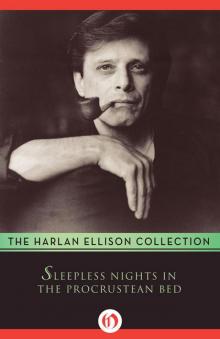 Sleepless Nights in the Procrustean Bed
Sleepless Nights in the Procrustean Bed Ellison Wonderland
Ellison Wonderland Children of the Streets
Children of the Streets Can & Can'tankerous
Can & Can'tankerous Love Ain't Nothing but Sex Misspelled
Love Ain't Nothing but Sex Misspelled Stalking the Nightmare
Stalking the Nightmare Approaching Oblivion
Approaching Oblivion Deathbird Stories
Deathbird Stories Partners in Wonder
Partners in Wonder Web of the City
Web of the City Spider Kiss
Spider Kiss A Boy and His Dog
A Boy and His Dog Shatterday
Shatterday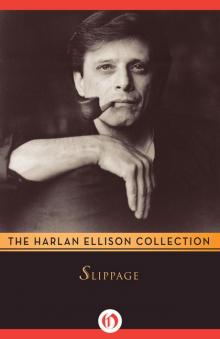 Slippage: Previously Uncollected, Precariously Poised Stories
Slippage: Previously Uncollected, Precariously Poised Stories Repent, Harlequin! Said the Ticktockman
Repent, Harlequin! Said the Ticktockman Come to Me Not in Winter's White
Come to Me Not in Winter's White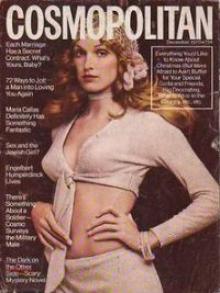 The Song the Zombie Sang
The Song the Zombie Sang The Other Glass Teat
The Other Glass Teat Doomsman - the Theif of Thoth
Doomsman - the Theif of Thoth The City on the Edge of Forever
The City on the Edge of Forever I See a Man Sitting on a Chair, and the Chair Is Biting His Leg
I See a Man Sitting on a Chair, and the Chair Is Biting His Leg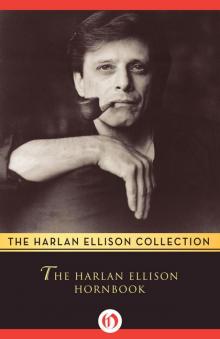 The Harlan Ellison Hornbook
The Harlan Ellison Hornbook Pulling A Train
Pulling A Train The Glass Teat - essays of opinion on the subject of television
The Glass Teat - essays of opinion on the subject of television An Edge in My Voice
An Edge in My Voice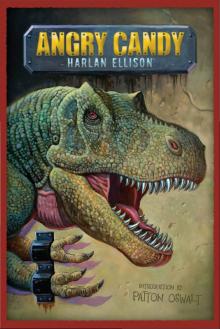 Angry Candy
Angry Candy Troublemakers
Troublemakers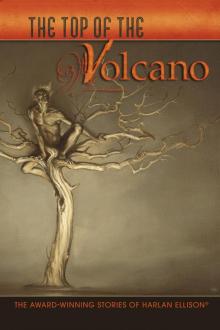 The Top of the Volcano
The Top of the Volcano Over the Edge
Over the Edge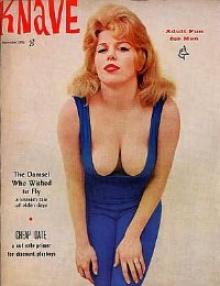 Survivor #1
Survivor #1 Slippage
Slippage